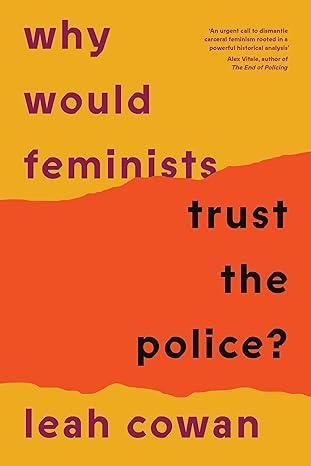Why Would Feminists Trust the Police?: A Tangled History of Resistance and Complicity
The relationship between feminists and law enforcement has always been fraught with tension and mistrust. "Why Would Feminists Trust the Police?: A Tangled History of Resistance and Complicity" dives deep into this complex dynamic, exploring the historical, social, and political contexts that have shaped feminists' interactions with the police. This book, available in Epub format, offers a comprehensive analysis of the multifaceted relationship between feminists and law enforcement, shedding light on both the resistance to and the occasional complicity with the police.
Historical Context: Roots of Mistrust
To understand the current mistrust, one must first look at the historical roots. The feminist movement, particularly during its second wave in the 1960s and 1970s, often found itself at odds with the police. This era saw feminists rallying against systemic issues such as domestic violence, sexual assault, and reproductive rights, areas where police response was frequently inadequate or outright hostile.
For instance, domestic violence was long considered a private matter, with police often reluctant to intervene. Feminists had to fight tirelessly to get law enforcement to recognize and respond to these issues seriously. The lack of adequate police response to sexual assault cases further fueled the distrust. Feminists criticized the police for their often insensitive and victim-blaming attitudes, which discouraged many survivors from seeking justice.
Resistance and Activism
The book explores key moments of feminist resistance against police brutality and negligence. The feminist movement has historically aligned itself with other social justice movements, such as the civil rights and LGBTQ+ movements, which also faced significant police oppression. This solidarity has reinforced feminists' critical stance towards law enforcement.
One of the pivotal events discussed is the Women's Liberation Movement's protests in the 1960s and 1970s. These protests were not just about gender equality but also about opposing a patriarchal system that the police were seen as upholding. The arrest and mistreatment of female protestors became a stark symbol of the police's role in suppressing women's rights.
Complicity and Cooperation
Despite the resistance, there have been moments of cooperation and complicity. The book examines instances where feminists have worked with law enforcement to achieve specific goals. For example, the push for legal reforms regarding domestic violence and sexual assault required collaboration with police departments to implement and enforce new laws.
The book also delves into the controversial issue of carceral feminism, a term used to describe the reliance on policing and imprisonment to address gender-based violence. While this approach has led to significant legal victories, it has also been criticized for perpetuating the very systems of oppression that feminists seek to dismantle.
Modern-Day Challenges
In contemporary times, the relationship between feminists and the police remains complex. The #MeToo movement, which brought global attention to sexual harassment and assault, highlighted both progress and ongoing challenges. While there has been an increased willingness among police to take such allegations seriously, many feminists continue to criticize the systemic biases and failures within law enforcement.
The book discusses how intersectionality has further complicated this relationship. Women of color, LGBTQ+ individuals, and other marginalized groups face unique challenges with the police, often experiencing compounded discrimination. Feminist activists argue that any trust in law enforcement must consider these intersecting identities and the varied experiences of different communities.
Trust and Reform
"Why Would Feminists Trust the Police?" does not just recount history; it also explores potential pathways to building trust and achieving meaningful reform. The book emphasizes the need for a multifaceted approach that includes police accountability, community-based solutions, and policy changes.
One of the suggested reforms is the increased involvement of feminists in police training programs. By educating law enforcement on issues such as gender sensitivity and the importance of a victim-centered approach, there is potential to create a more empathetic and effective police force.
The book also advocates for stronger civilian oversight of police departments to ensure accountability and transparency. This, coupled with community-based initiatives to address root causes of violence and crime, offers a holistic approach to reform.
Conclusion: A Path Forward
The relationship between feminists and the police is undeniably tangled, marked by both resistance and moments of cooperation. "Why Would Feminists Trust the Police?: A Tangled History of Resistance and Complicity" provides a thorough examination of this complex dynamic, offering insights into the historical and contemporary challenges faced by feminists in their interactions with law enforcement.
The book concludes with a call to action, urging readers to engage in the ongoing dialogue about police reform and the role of feminists in shaping a more just and equitable society. It highlights the importance of understanding and addressing the deep-seated issues that have historically driven a wedge between feminists and the police, advocating for a future where trust can be rebuilt through accountability, empathy, and meaningful change.
In summary, "Why Would Feminists Trust the Police?" is a crucial read for anyone interested in the intersections of gender, justice, and law enforcement. It not only chronicles the struggles and achievements of feminist activists but also serves as a guide for navigating the complex terrain of police reform in the pursuit of a more inclusive and equitable society.
